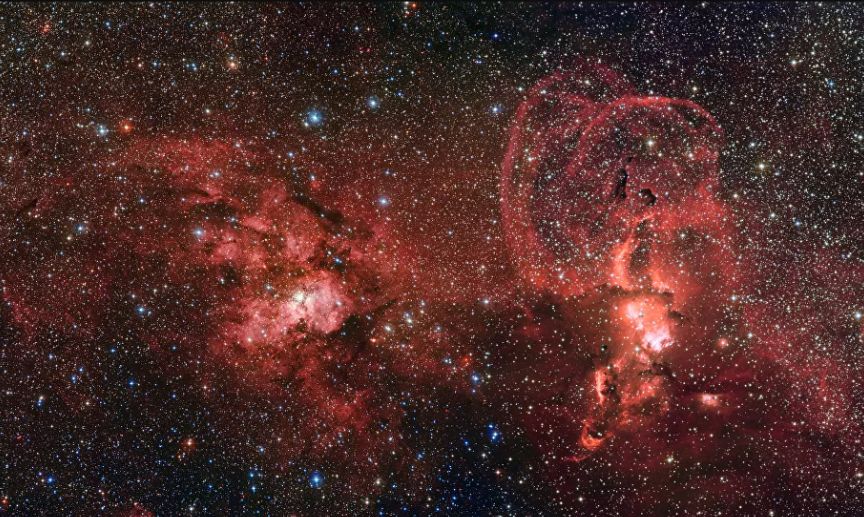What happens in space never ceases to amaze scientists. An international team of astrophysicists has found the stuff that stars are made of where no one expected it.
At the center of the Milky Way is Sagittarius A *, a gigantic black hole, surrounded by a huge cloud – or bubble – of interstellar gas. In 2010, astronomers discovered these so-called Fermi bubbles and identified them as complex structures that ripple above and below the center of the Milky Way and consist of different gases and gamma rays.
Until now it was known that the molecular gases present in the Fermi bubbles were hot and there has been no evidence of a cold dense molecular phase.
However, recently astronomers have published in the journal Nature that in the atomic hydrogen clouds circulating in the nuclear wind, balls of cold molecular gas, that is, the material from which stars are made, were found for the first time.
According to the researchers, the center of the galaxy “fired them like bullets”, and they don’t know how it did it.
“The wind at the centre of the Milky Way has been the topic of plenty of debate since the discovery a decade ago of the so-called Fermi Bubbles,” says astrophysicist Naomi McClure-Griffiths of the Australian National University.
To study the atomic hydrogen clouds previously identified in the Fermi bubbles, astronomers used the Atacama Pathfinder Experiment (APEX) radio telescope in the desert of Chile. The results astonished them: it seems that cold gas is present in the bubbles in a huge amount.
According to scientists, these clouds are mixing with the warmer medium and possibly breaking up. Furthermore, it is suggested that the mass of the molecular gas outlet could affect the rate of star formation in the central regions of the galaxy.
“When you drive out a lot of mass, you’re losing some of the material that could be used to form stars, and if you lose enough of it, the galaxy can’t form stars at all anymore. So, to be able to see hints of the Milky Way losing this star-forming gas is kind of exciting – it makes you wonder what’s going to happen next!” adds Naomi McClure-Griffiths to Science Alert.
